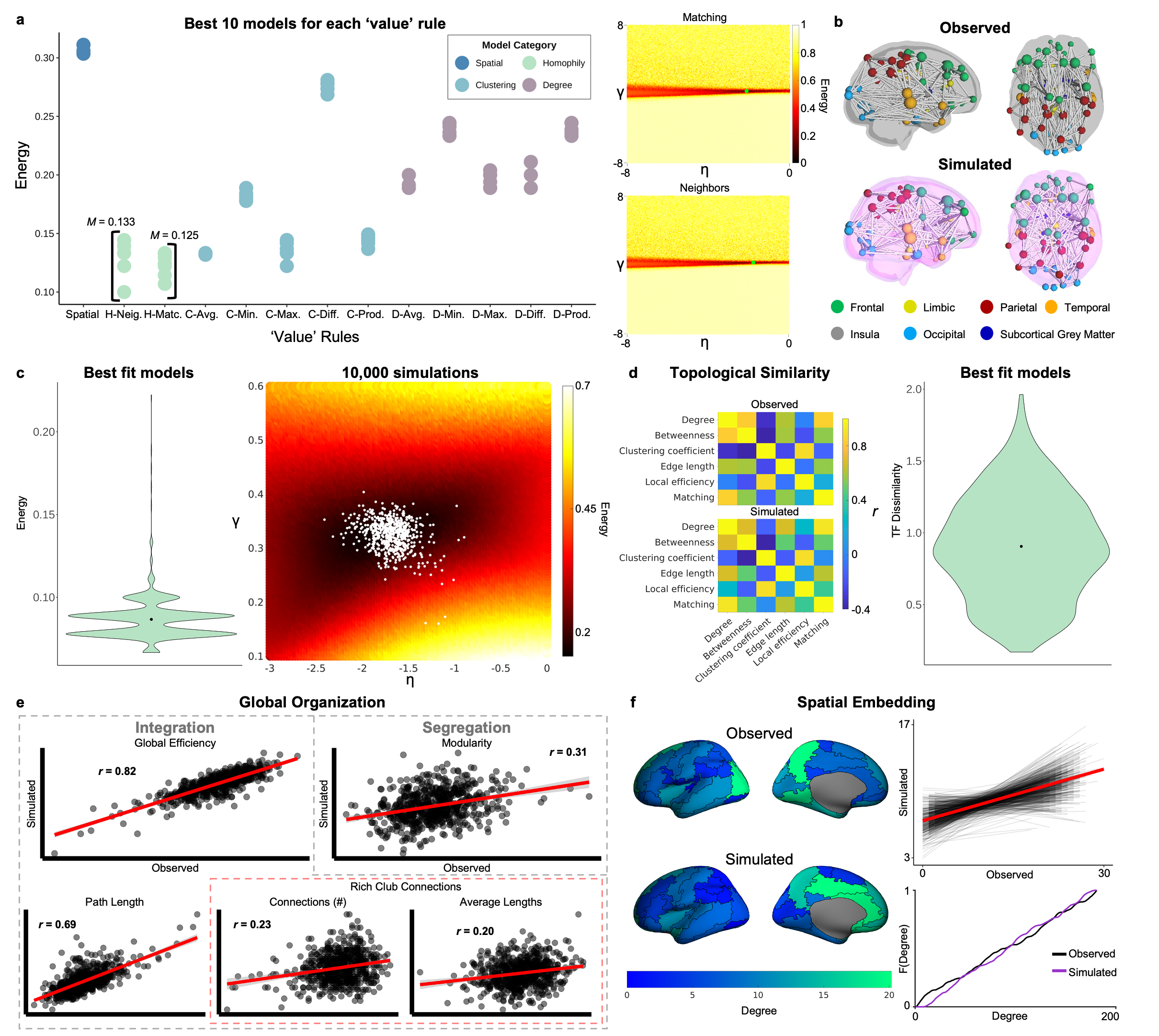
Submitted by la334 on Wed, 12/02/2025 - 14:36
How the brain organizes in utero is associated with cognition and behaviour in later life.
Infants born early have differently organized brain networks than infants born at term.
Our study used the developing Human Connectome Project data to explore structural topology across neonates born at different gestational ages. Our results show that early babies had less connected, more segregated brain topology than term infants. We then conducted generative network models to simulate the emergence of network organization. Through this, we found that to replicate preterm-like topology, the models required tighter wiring constraints than term infant networks. This means the preterm networks preferentially selected short connections and weighed topologically valuable connections more than term networks. These wiring constraints preserve vital, long-range connections despite overall short connection lengths across the network. Overall, this study highlights that altered network topology in premature infants relates to renegotiating wiring principles.

